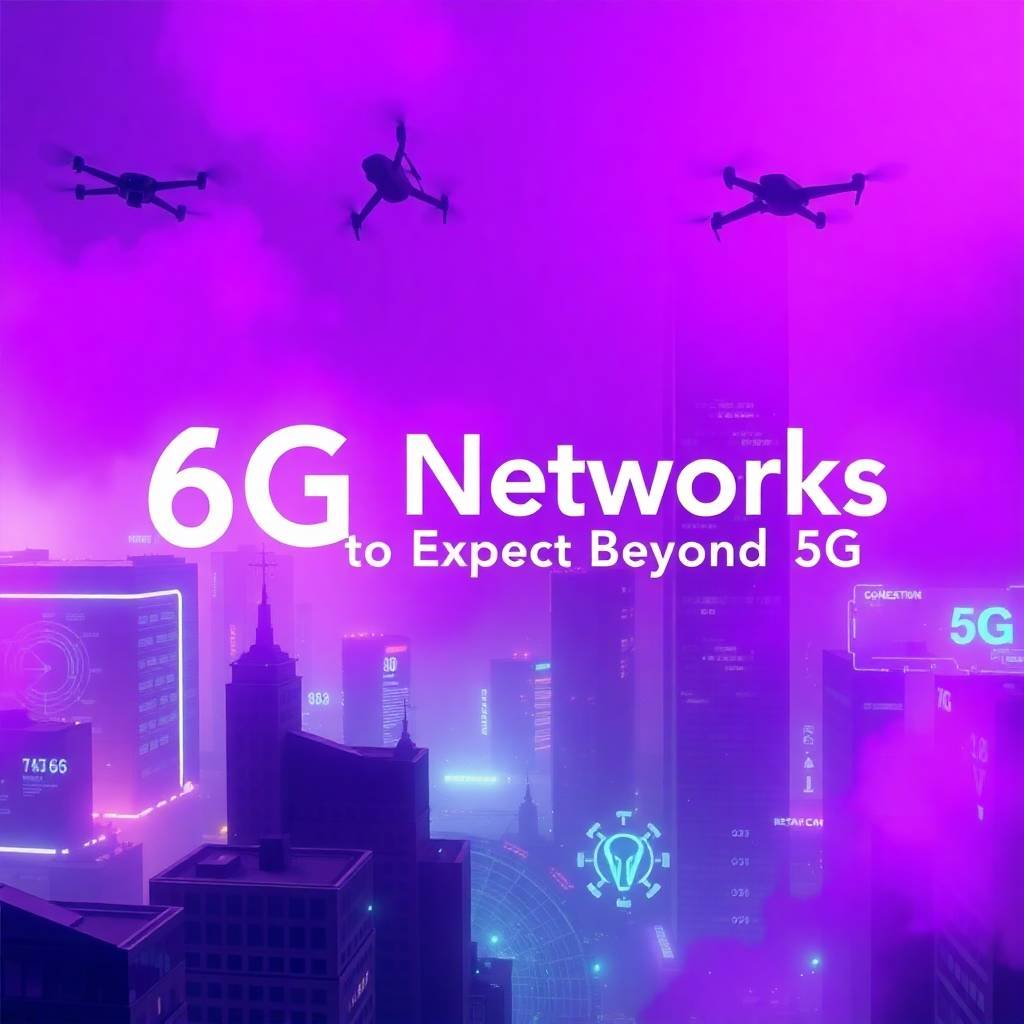As we stand on the brink of a new era in telecommunications, 6G networks promise to revolutionize the way we connect, communicate, and interact with the digital world. While 5G has just begun to make its mark, developers and innovators are already hard at work envisioning the capabilities of 6G. But what exactly can we expect from this next-generation network? In this blog post, we’ll explore the potential of 6G technology, its groundbreaking features, and the challenges that lie ahead.
What is 6G?
Envisioned as a successor to the current 5G networks, 6G is expected to push the boundaries of speed, connectivity, and innovation. While it remains in the early stages of development, 6G aims to offer data rates that are multiple times faster than 5G, with significantly reduced latency and enhanced reliability. This leap in technology will pave the way for applications that we can only dream of today, from ultra-realistic virtual reality experiences to seamless communication between billions of devices.
How does it differ from 5G?
While 5G has already introduced impressive advancements in speed and low latency, 6G is set to expand on these features by integrating cutting-edge technologies such as artificial intelligence and advanced machine learning. This integration will enable smart networks that can self-optimize and provide tailored experiences based on user needs and environmental factors. Moreover, 6G networks will likely support even greater device density, ensuring robust connections in urban landscapes and remote areas alike.
The Evolution from 5G to 6G
The Journey So Far
The evolution of mobile networks has been a fascinating journey, from the humble beginnings of 1G, which primarily supported voice calls, to the current 5G networks that offer high-speed data for a plethora of applications. Each generation has brought significant advancements, and 5G has set the stage with its promise of ultra-reliable, low-latency communication and massive IoT connectivity. Despite its recent implementation, the industry is already looking ahead to 6G, envisioning a new wave of innovation.
Key Drivers of 6G Development
Several key factors are driving the rapid development of 6G technology. First and foremost is the insatiable demand for faster and more reliable internet connectivity, fueled by the increasing reliance on digital services and the proliferation of smart devices. Additionally, the integration of artificial intelligence (AI) and the Internet of Things (IoT) into everyday life requires a network that can handle vast amounts of data with minimal delay. 6G is poised to meet these demands, offering capabilities that far exceed those of its predecessors
Features and Capabilities of 6G
Unprecedented Speeds and Latency
One of the most talked-about features of 6G is its potential to achieve data transfer rates that are several times faster than 5G. This leap in speed will dramatically reduce latency, making real-time applications even more seamless. Imagine downloading a high-definition movie in seconds or enjoying a lag-free immersive experience in virtual reality. Such advancements will redefine our expectations of digital services.
Enhanced Connectivity
6G networks are expected to offer unparalleled connectivity, seamlessly integrating a multitude of devices and ensuring strong, consistent coverage across diverse terrains. This capability will be crucial in supporting the growing number of IoT devices, which require stable connections to function efficiently. Moreover, 6G aims to provide global coverage improvements, bridging the digital divide and bringing high-speed internet to remote and underserved areas.
Revolutionary Applications
The possibilities with 6G are endless. From ultra-realistic virtual and augmented reality environments to fully autonomous vehicles, 6G will enable applications that were once the realm of science fiction. For instance, smart cities will benefit from real-time data processing, enhancing everything from traffic management to energy consumption. Industries like healthcare, education, and entertainment are also poised for transformation, with 6G facilitating innovations like remote surgery and interactive learning experiences.
Challenges and Considerations
Technical and Infrastructure Hurdles
Building the infrastructure necessary for 6G will be no small feat. As with any new technology, there are significant challenges to overcome, including the development of new hardware and the allocation of spectrum. Spectrum allocation remains a critical issue, as 6G will likely require higher frequency bands to achieve its performance goals. Additionally, deploying 6G infrastructure will demand substantial investment and collaboration among governments, telecom companies, and technology providers.
Privacy and Security Concerns
As 6G networks become more pervasive, ensuring data privacy and security becomes a paramount concern. With the expected increase in connected devices and data exchange, protecting sensitive information from cyber threats will be crucial. Regulatory bodies will need to establish robust frameworks to safeguard user data and ensure that new technologies adhere to stringent security standards. Addressing these concerns early in the development phase will be essential to gain public trust and foster widespread adoption.
Conclusion
As we gaze into the future of telecommunications, 6G networks stand as a beacon of potential, promising to surpass the capabilities of 5G and unlock new possibilities in connectivity and innovation. Throughout this exploration, we’ve seen how 6G aims to deliver unprecedented speeds, enhanced connectivity, and revolutionary applications that could transform industries and daily life.
However, the journey to realize 6G is not without its challenges. From technical hurdles in infrastructure development to pressing privacy and security concerns, overcoming these obstacles will require concerted efforts from all stakeholders involved. Despite these challenges, the promise of 6G is undeniable, and with continued research and global collaboration, this technology could redefine the digital landscape.
As we prepare for a 6G world, it is crucial for industry leaders, policymakers, and consumers to engage in dialogue and work together to ensure that the rollout of 6G is both sustainable and beneficial to society. The future is bright, and 6G is set to be a game-changer in how we connect, interact, and innovate.

